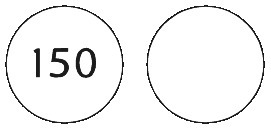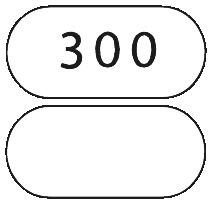What is in this leaflet
This leaflet answers some common questions about AUSRAN.
It does not contain all the available information.
It does not take the place of talking to your doctor or pharmacist.
All medicines have risks and benefits. Your doctor has weighed the risks of you taking AUSRAN against the benefits they expect it will have for you.
Talk to your doctor or pharmacist if you have any concerns about taking this medicine.
Keep this leaflet with this medicine. You may need to read it again.
What is AUSRAN used for
The name of your medicine is AUSRAN. It contains the active ingredient called ranitidine hydrochloride.
It belongs to a group of medicines called H2-antagonists or H2 blockers.
This medicine is used to help reduce the amount of acid produced by your stomach in people who have:
- Peptic ulcers, also called gastric ulcers if it occurs in the stomach or duodenal ulcers if they occur in the duodenum (the tube that leads out of the stomach)
Peptic ulcers cause pain and discomfort (indigestion) which is felt between the naval and the breast bone.
AUSRAN can also be used to stop these ulcers from coming back.
- Reflux oesphagitis
This condition is caused by the washing back, or reflux, of food and acid from the stomach into the food pipe. It causes a burning sensation in the chest rising up to the throat and is also known as heartburn. It usually occurs after eating or at night and gets worse when you bend over. - Zollinger-Ellison disease
This is a rare condition where the stomach produces too much acid. - Scleroderma oesphagitis
By reducing the amount of acid produced by the stomach, AUSRAN reduces the pain associated with the above conditions, helps ulcers to heal and helps heal oesphagitis.
Your doctor may have prescribed AUSRAN for another reason. Ask your doctor if you have any questions about why this medicine has been prescribed for you.
AUSRAN is not addictive. AUSRAN is only available with a doctor’s prescription.
Before you take AUSRAN
When you must not take it
Do not take AUSRAN if you have or have had acute porphyria
Do not take it if you are allergic to ranitidine or any of the inactive ingredients listed at the end of this leaflet.
Do not take AUSRAN after the expiry date printed on the pack. If you take it after the expiry date has passed, it may not work as well.
Do not take AUSRAN if the packaging is torn or shows signs of tampering, or if the tablets do not look quite right.
Talk to your doctor if you are not sure whether you should be taking AUSRAN.
Before you start to take it
Tell your doctor if you have allergies to:
- any other medicines
- any other substances, such as foods, preservatives or dyes.
Tell your doctor if you are pregnant or intend to become pregnant. Like many other medicines, the use of AUSRAN is not recommended during pregnancy. Your doctor will discuss the risks and benefits of using AUSRAN if you are pregnant.
Tell your doctor if you are breast-feeding or planning to breast-feed. Your baby may absorb this medicine from breast milk and therefore there is the possibility of harm to the baby. Your doctor will discuss the risks and benefits of using AUSRAN if you are breast-feeding
Tell your doctor if you have or have had any medical conditions, especially the following:
- kidney or liver problems
- chronic lung disease
- diabetes
- immunocompromised
- acute porphyria
Tell your doctor if you plan to have surgery.
If you have not told your doctor about any of the above, tell them before you use AUSRAN.
Taking other medicines
Tell your doctor if you are taking any other medicines, including medicines you buy without a prescription from a pharmacy, supermarket or health food shop.
Some medicines may interfere with the absorption of AUSRAN. These include:
- sucralfate (Carafate®), another medicine used to treat peptic ulcers
These medicines may be affected by AUSRAN or may affect how well it works. You may need to use different amounts of your medicine or you may need to take different medicines. Your doctor will advise you.
Your doctor or pharmacist has more information on medicines to be careful with or avoid while taking this medicine.
How to take AUSRAN
Follow all directions given to you by your doctor or pharmacist carefully. They may differ from the information contained in this leaflet.
If you do not understand the instructions on the box, ask your doctor or pharmacist for help.
How much to take
The dose of AUSRAN will vary depending on what condition you are being treated for. The following information includes the average doses of AUSRAN.
The usual adult dose is 150 to 300 mg per day, taken as one 150 mg tablet once or twice a day, or one 300 mg tablet at bedtime.
How to take it
Swallow the tablet with a full glass of water.
When to take it
It does not matter if you take AUSRAN before or after food.
Take your medicine at about the same time each day. Taking your tablets at the same time each day will have the best effect. It will also help you to remember when to take the tablets.
How long to take it
AUSRAN helps control your condition, but does not cure it. Therefore you must take it every day.
Your pain or other symptoms may take a few days to go away.
Continue taking AUSRAN even if you feel better.
Even when you finish your tablets, your doctor may want you to continue taking AUSRAN, possibly at a different dose, to help stop the problem coming back again.
If you forget to take it
If it is almost time for your next dose, skip the dose you missed and take your next dose when you are meant to. Otherwise, take it as soon as you remember, and then go back to taking it as you would normally.
Do not double a dose to make up for the dose you have missed.
If you are not sure what to do, ask your doctor or pharmacist.
If you have trouble remembering when to take your medicine, ask your pharmacist for some hints.
If you take too much (Overdose)
Immediately telephone your doctor or the Poisons Information Centre (telephone 13 11 26), or go to Accident and Emergency at your nearest hospital, if you think that you or anyone else has taken too much AUSRAN. Do this even if there are no signs of discomfort or poisoning. You may need urgent medical attention.
While you are taking AUSRAN
Things you must do
Tell all doctors, dentists and pharmacists who are treating you that you are taking AUSRAN.
If you are about to be started on any new medicine, tell your doctor or pharmacist that you are taking AUSRAN.
If you plan to have surgery that needs a general anaesthetic, tell your doctor or dentist that you are taking AUSRAN.
Tell your doctor if you become pregnant while taking this medicine.
Visit your doctor regularly so that they can check your progress.
Things you must not do
Do not give this medicine to anyone else, even if they have the same condition as you.
Do not use AUSRAN to treat any other complaints unless your doctor tells you to.
Do not stop taking it, or change the dose, without first checking with your doctor.
Do not let yourself run out of medicine over the weekend or on holidays.
Side effects
Tell your doctor or pharmacist as soon as possible if you do not feel well while you are taking AUSRAN.
AUSRAN helps most people reduce the amount of acid in the stomach, but may have unwanted side effects in a few people.
All medicines can have side effects. Sometimes they are serious, most of the time they are not. You may need medical treatment if you get some of the side effects.
Ask your doctor or pharmacist any questions you may have.
Tell your doctor if you notice any of the following and they worry you:
- dizziness or light-headedness
- headache
- muscle or joint pain
- depression
- constipation
These are the more common side effects of AUSRAN. These side effects are usually mild.
Tell your doctor immediately or go to Accident and Emergency (Casualty) at your nearest hospital if you notice any of the following:
- skin rash, hives, itching
- swelling of the eyelids, face or mouth
- wheezing, chest pain, or a change in the type of pain
- yellow colouring of the skin or eyes (jaundice)
- confusion/hallucinations
- fever
- hypotension
These side effects are uncommon but may be serious and need urgent medical attention.
Other side effects not listed above may also occur in some patients. Tell your doctor if you notice anything else that is making you feel unwell.
Do not be alarmed by this list of possible side effects. You may not experience any of them.
After taking it
Storage
Keep your tablets in the blister pack until it is time to take them. If you take the tablets out of the box or the blister pack they may not keep well.
Keep your AUSRAN in a cool dry place where it stays below 25°C.
Do not store it, or any other medicine, in the bathroom or near a sink.
Do not leave it in the car on hot days. Heat and dampness can destroy some medicines.
Keep this medicine where young children cannot reach it. A locked cupboard at least one-and-a-half metres above the ground is a good place to store medicines.
Disposal
If your doctor tells you to stop taking AUSRAN or you find that they have passed their expiry date, ask your pharmacist what to do with any tablets that are left over.
Product description
What it looks like
AUSRAN 150 mg tablets are available in packs of 60. Tablets are white, round, biconvex, film-coated, embossed with ‘150’ on one side and plain on the other.
AUSRAN 300 mg tablets are available in packs of 30. Tablets are white, oblong, biconvex, film-coated, embossed with ‘300’ on one side and plain on the other.
Ingredients
Active ingredient:
AUSRAN 150 mg
- 150 mg ranitidine per tablet.
AUSRAN 300 mg
- 300 mg ranitidine per tablet
Inactive ingredients
- cellulose – microcrystalline
- croscarmellose sodium
- magnesium stearate
- OPADRY Complete film coating YS-22-18096 White (USA).
Sponsor or Supplier
AUSRAN is supplied in Australia by:
Arrow Pharma Pty Ltd
15-17 Chapel Street
Cremorne VIC 3121
Australia
Australian Registration Number:
AUSRAN 150 mg tablets:
AUST R 97354
AUSRAN 300 mg tablets:
AUST R 97355
This leaflet revised in July 2016.
Published by MIMS February 2017




